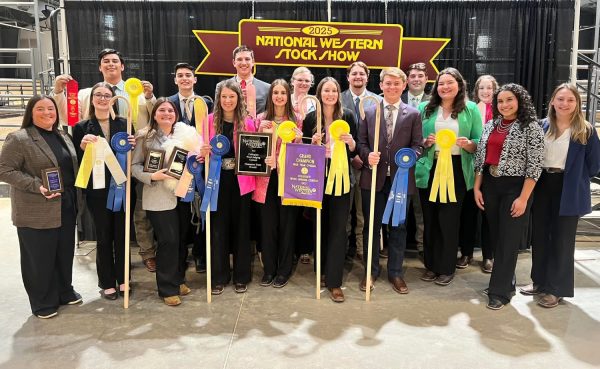OP/ED: What’s that smell?
If you have walked around the Great Plains, you’ve probably encountered the “smell of money”, as the local community calls it.
The smell permeates from 130 concentrated animal feeding operations (CAFOs) within a 150-mile radius of Amarillo. The Texas Panhandle is home to the largest concentration of cattle in the entire world.
Four percent of all the cattle in the United States, 3.72 out of 94.4 million, are located in our area of the country. Over half a million cattle, 592,087, are located in the county directly west of the West Texas A&M University campus. Deaf Smith County is the number one cattle-producing county in the highest cattle-producing state in the country. Big beef is quite literally in WT’s backyard.
CAFOs are a relatively new idea in the cattle industry, as the markets have become easier to transport around the country via the Interstate System and railways. The 1950s and 60s had record harvests due to the emerging technology of genetically modified organisms (GMOs). Innovations reduced the costs of managing livestock and the industry moved into a direction of consolidation.
These consolidations led to environmental factors being considered for the first time. Studies performed at Texas Tech University have shown that the average cow produces around 28.5 grams of PM10 particles. PM10 particles have a diameter of 10 micrometers or less. This is about a fifth of the width of a human hair. The small size of the particles is worrying due to the ability to pass through the nose into the lung.
The National Association of Local Boards of Health wrote, “CAFOs are an excellent example of how environmental problems can directly impact human and community well-being,” in 2010.
This worrying effect isn’t just affecting the air we breathe, but also our precious water resources. Buffalo Lake National Wildlife Refuge, formerly known as Buffalo Lake in the 1970s, was impacted by the feedlots before it evaporated from a lack of water.
A 1991 contaminants report was released about the Buffalo Lake National Wildlife Refuge. The conclusions showed that runoff from feedlots upstream, around Hereford, had caused fish kills in the past. With the creek now empty, we can easily evaluate the soil of the bed. It has been found to have elevated concentrations of various cattle-related pollutants.
These results should be expected, as there were smaller, less managed feedlots without retention ponds or additional storage capacity to attenuate surface runoff during rainfall events. The effects of having such a large area concentrated with cattle are still massive in spite of current regulations and can be smelt from miles away.
In a 2020 article about the dust from CAFOS, WT’s Department of Nursing is mentioned as being impacted by the influence of free enterprise as WT’s administrators were worried about the concerns of studying the negative impacts of living near a CAFO.
For this story, I reached out to the Department of Nursing for a comment and received no response. Private-public partnerships help fund studies and research in higher education, but have also shown to impact the direction of decisions with their research.
I am an Agriculture major that grew up on a small cow-calf operation in rural Texas. The intentions behind this story are not to bring down agriculture, but to highlight the effects that aren’t complimentary to society.
Industries have been on a trend of deregulation for years in terms of environmental and labor standards. It’s in the interests of the Texas Panhandle to study the effects of living in the “beef capital of the world”. The smell of money, more than likely, isn’t going anywhere. People living here should know the facts about the potential health impacts of living in such a smelly place.











